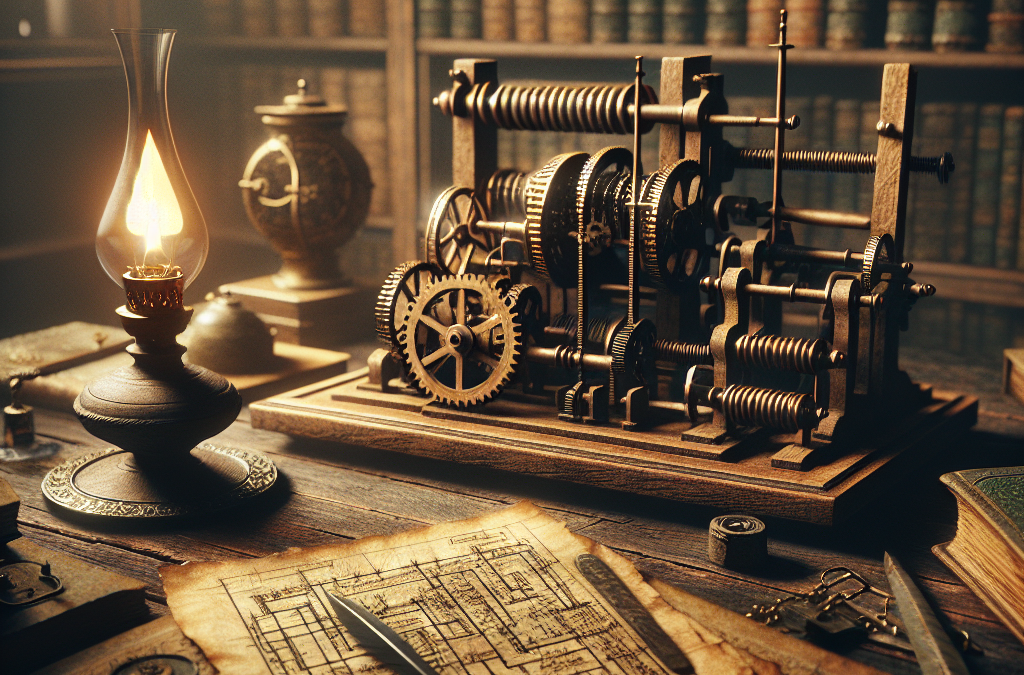
The Untold Story of the First Computer
The Dawn of Computing: Understanding the First Computer
Long before smartphones and laptops, there was a monumental invention that laid the groundwork for the digital age: the first computer. This device was not simply a machine to crunch numbers; it represented a seismic leap in human capability. But the story of the first computer is far richer than most realize. It involves visionary inventors, groundbreaking engineering, and a series of fascinating developments spanning decades. Exploring this untold story reveals how the first computer paved the way for today’s technology, capturing an essential chapter in tech history that often goes overlooked.
What Defines the First Computer?
Before diving into the history, it’s crucial to clarify what we mean by the first computer. Whether counting mechanical calculators, programmable devices, or electronic beasts, definitions vary.
Mechanical Versus Electronic
The earliest devices were mechanical. For example, the abacus and Charles Babbage’s Analytical Engine marked early efforts toward automated calculation.
– The abacus dates back thousands of years, designed for simple arithmetic.
– Babbage’s Analytical Engine, conceived in the 1830s, was a programmable mechanical device but never fully built.
In contrast, the electronic computer uses electrical circuits to process information dramatically faster and with greater flexibility.
Criteria That Matter
Key aspects often define the first computer:
– Ability to execute complex calculations automatically
– Programmability via instructions or stored programs
– Use of electronic or electromechanical components
– Capacity for memory or data storage
This helps distinguish machines like the ENIAC, UNIVAC, and Colossus, which are often cited in discussions around the first computer.
The Inventors Behind the First Computer
Many pioneering figures contributed to developing the first computer, combining mathematical genius and engineering skill.
Charles Babbage: The Analytical Engine
Because the title of first computer often goes to a range of machines, Babbage’s conception is essential. His Analytical Engine introduced concepts underpinning modern computing, such as the stored program and conditional branching.
However, his machine was purely mechanical and incomplete, as the technology of his era couldn’t realize its full potential.
Alan Turing and the Concept of Computability
A theoretical giant, Turing developed foundational ideas about algorithms and computation in the 1930s. His work influenced later practical machines.
He also played a vital role in designing the Colossus during World War II, one of the earliest electronic programmable computers used to decode enemy messages.
The First Electronic Computer: Breaking New Ground
Electronic computing power exploded during World War II and the years immediately after.
ENIAC: The Trailblazer
– Completed in 1945, the Electronic Numerical Integrator and Computer (ENIAC) is widely recognized as the first general-purpose electronic computer.
– It was huge—occupying about 1,800 square feet—and used roughly 18,000 vacuum tubes.
– ENIAC could perform thousands of calculations per second, far surpassing mechanical predecessors.
– Initially designed for artillery firing tables, it was later reprogrammed to solve diverse mathematical problems.
Colossus: The Secret Computer
Developed in Britain during WWII, Colossus was used to break encrypted German messages.
– Though limited to specific codebreaking tasks, it was one of the first electronic programmable digital computers.
– Unlike ENIAC, Colossus utilized Boolean logic rather than pure numerical computation.
– Its existence remained classified for decades, delaying recognition as a pioneer.
The Evolution From First Computer to Modern Machines
Understanding the development trajectory helps put the first computer’s achievements in perspective.
From Vacuum Tubes to Transistors
– ENIAC and Colossus relied on vacuum tubes, which were bulky and prone to failure.
– The invention of the transistor in 1947 revolutionized computing by enabling smaller, faster, more reliable machines.
– This transition marked the beginning of second-generation computers in the 1950s.
Stored Program Architecture
– John von Neumann’s architecture, proposed in the mid-1940s, allowed instructions and data to be stored in a computer’s memory.
– This design underpins nearly all modern computers, vastly increasing flexibility.
– Machines like the EDVAC adopted this approach soon after.
Legacy and Impact of the First Computer
The first computer’s impact extends beyond technical wonders; it reshaped society in lasting ways.
Accelerating Scientific Discovery and Industry
– More rapid calculations enabled breakthroughs in physics, chemistry, and engineering.
– Computational power helped design everything from aircraft to pharmaceuticals.
Laying the Foundation for the Digital Age
– Concepts pioneered by the first computer are embedded in all modern electronic devices.
– It kickstarted an information revolution, leading to the internet, smartphones, and AI.
Quotes Reflecting Early Computing’s Importance
– Grace Hopper, a computing pioneer, once said, “The most dangerous phrase in the language is, ‘We’ve always done it this way.’” This mindset fueled innovation that shaped the first computer.
– John Presper Eckert, co-inventor of ENIAC, described it as “the greatest invention since the wheel.”
Exploring Further: Resources on the First Computer
For those eager to delve deeper into the first computer’s story:
– Consider visiting the Computer History Museum’s website for detailed exhibits: https://www.computerhistory.org/
– Books such as “ENIAC: The Triumphs and Tragedies of the World’s First Computer” by Scott McCartney provide comprehensive narratives.
– Documentaries and online lectures offer visual insights into early computer engineering.
Rediscovering the First Computer’s Role Today
Reflecting on the journey from the earliest mechanical calculators to the modern computing landscape emphasizes how foundational the first computer remains. Its invention ignited a chain reaction of innovation still transforming how we live, work, and communicate.
Whether you are a tech enthusiast, a student, or a professional, appreciating the first computer’s history enriches your understanding of current technologies and inspires future breakthroughs.
Ready to explore this fascinating era more thoroughly? Reach out at khmuhtadin.com to connect, share insights, or start your tech history journey today. The untold story of the first computer awaits your discovery.
